Big Data and Case Management: Making It Easy

Interpretation refers to the action of converting a data set into a meaningful form. This is a really significant part scientific study. Data interpretation is also a step of filtering precious data from large quantities of input data sets.
Big Data and Case Management: Making It Easy
Interpretation refers to the action of converting a data set into a meaningful form. This is a really significant part scientific study. Data interpretation and statistical evaluation is the process of supplying meaning to the gathered raw data through the use of various tools and techniques. Data interpretation is also a step of filtering precious data from large quantities of input data sets. Data interpretation and statistical evaluation is the process of supplying meaning to the gathered raw data through the use of various tools and techniques disability support services.
A significant advantage of the advantages of interpreting health care information is that health literacy may be encouraged by simply making it more transparent. By making health information more readily available to patients and providers and communication channels are created more effective and smoother. Additionally, by making interpretation more transparent, it becomes easier for people to build on the advantages of health research. By increasing the transparency of the process, individuals are motivated to test new products or see their doctors more frequently.
Health literacy is also connected to the decision making process. As individuals discover more about how their bodies work and what their symptoms imply , they can make more educated decisions. By utilizing data analysis and statistical analysis, physicians are better able to convey their ideas and values . Also, as people become more knowledgeable about the illness and also scenarios in which they are presented together with, they have a tendency in order to better deal with those situations in a more effective manner. The accuracy of the information provided by data interpretation and statistical evaluation strongly influences the decisions made by health providers and patients.
1 major advantage of interpretation and statistical evaluation is enhanced cost efficiency. Most health organizations wish to maximize the value of their cash. By making interpretation and statistical analysis a priority, they can do this at a most cost effective manner. Also, as individuals become more informed about the value of health information, they can choose and use services that provide them with the very best value for their money. Health organizations can save a great deal of money concerning direct office expenses and overhead by creating interpretation and statistical analysis a priority.
Big Data and Case Management: Making It Easy
Another important benefit of health data management is that the impact it has on individual decision making. The huge amount of numerical information that have to be gathered and interpreted can lead to anxiety and frustration. By enabling caregivers to create good interpretations of health information, this anxiety and frustration can be reduced and a more efficient procedure can be implemented. Data interpretation and statistical evaluation are directly connected to individual decision making. As more people rely on health information management, they’re likely to gain a more comprehensive comprehension of their health and their requirement and are thus less likely to make bad decisions.
In the electronic age we live in, the interpretation of large quantities of sensitive data collections has never been easier. Interpretation is not just more economical and more efficient, but it’s now easier than ever before to get large, higher quality data sets without needing to understand and train for in-depth mathematical abilities. The combination of interpretation technology and large data analytics is creating interpreting clinical research much easier than before, allowing research scientists to reach their conclusions and implement important reforms.
The combination of large data analytics and interpretive technology is also making qualitative data analysis easier than ever before. Although most people today understand the significance of qualitative research, many have no idea how difficult it is to conduct such investigation. With interpretative technology like electronic health records and genomics, qualitative data analysis has become quicker, more targeted and far more useful. The combo of big data analytics and interpretative technology is making qualitative research much easier than ever .
Big Data and Case Management: Making It Easy
The combo of big data analytics and case management chronic ailments is making health literacy much simpler than ever before. Health literacy is essential in ensuring that decisions are made in regards to patients and their healthcare. Health literacy also allows healthcare practitioners to make better informed decisions about their patients, enabling them with the resources and information required to improve care and increase patient satisfaction. By using interpretive technology and case management, health care professionals can decrease the time spent on cases, improve communication between doctors and patients and increase profitability by reducing overhead costs. As healthcare professionals become more proficient in handling the intricate cases they face as a practitioner, they’ll be in a position to help make health literacy an integral component of the healthcare industry.
A significant advantage of the advantages of interpreting health care information is that health literacy may be encouraged by simply making it more transparent. By making health information more readily available to patients and providersand communication channels are created more effective and smoother. Additionally, by making interpretation more transparent, it becomes easier for people to build on the advantages of health research. By increasing the transparency of the process, individuals are motivated to test new products or see their doctors more frequently.
Health literacy is also connected to the decision making process. As individuals discover more about how their bodies work and what their symptoms imply , they can make more educated decisions. By utilizing data analysis and statistical analysis, physicians are better able to convey their ideas and values . Also, as people become more knowledgeable about the illness and also scenarios in which they are presented together with, they have a tendency in order to better deal with those situations in a more effective manner. The accuracy of the information provided by data interpretation and statistical evaluation strongly influences the decisions made by health providers and patients.

1 major advantage of interpretation and statistical evaluation is enhanced cost efficiency. Most health organizations wish to maximize the value of their cash. By making interpretation and statistical analysis a priority, they can do this at a most cost effective manner. Also, as individuals become more informed about the value of health information, they can choose and use disability support services that provide them with the very best value for their money. Health organizations can save a great deal of money concerning direct office expenses and overhead by creating interpretation and statistical analysis a priority.
Another important benefit of health data management is that the impact it has on individual decision making. The huge amount of numerical information that have to be gathered and interpreted can lead to anxiety and frustration. By enabling caregivers to create good interpretations of health information, this anxiety and frustration can be reduced and a more efficient procedure can be implemented. Data interpretation and statistical evaluation are directly connected to individual decision making. As more people rely on health information management, they’re likely to gain a more comprehensive comprehension of their health and their requirement and are thus less likely to make bad decisions.
In the electronic age we live in, the interpretation of large quantities of sensitive data collections has never been easier. Interpretation is not just more economical and more efficient, but it’s now easier than ever before to get large, higher quality data sets without needing to understand and train for in-depth mathematical abilities. The combination of interpretation technology and large data analytics is creating interpreting clinical research much easier than before, allowing research scientists to reach their conclusions and implement important reforms.
The combination of large data analytics and interpretive technology is also making qualitative data analysis easier than ever before. Although most people today understand the significance of qualitative research, many have no idea how difficult it is to conduct such investigation. With interpretative technology like electronic health records and genomics, qualitative data analysis has become quicker, more targeted and far more useful. The combo of big data analytics and interpretative technology is making qualitative research much easier than ever .
The combo of big data analytics and case management chronic ailments is making health literacy much simpler than ever before. Health literacy is essential in ensuring that decisions are made in regards to patients and their healthcare. Health literacy also allows healthcare practitioners to make better informed decisions about their patients, enabling them with the resources and information required to improve care and increase patient satisfaction. By using interpretive technology and case management, health care professionals can decrease the time spent on cases, improve communication between doctors and patients and increase profitability by reducing overhead costs. As healthcare professionals become more proficient in handling the intricate cases they face as a practitioner, they’ll be in a position to help make health literacy an integral component of the healthcare industry.
